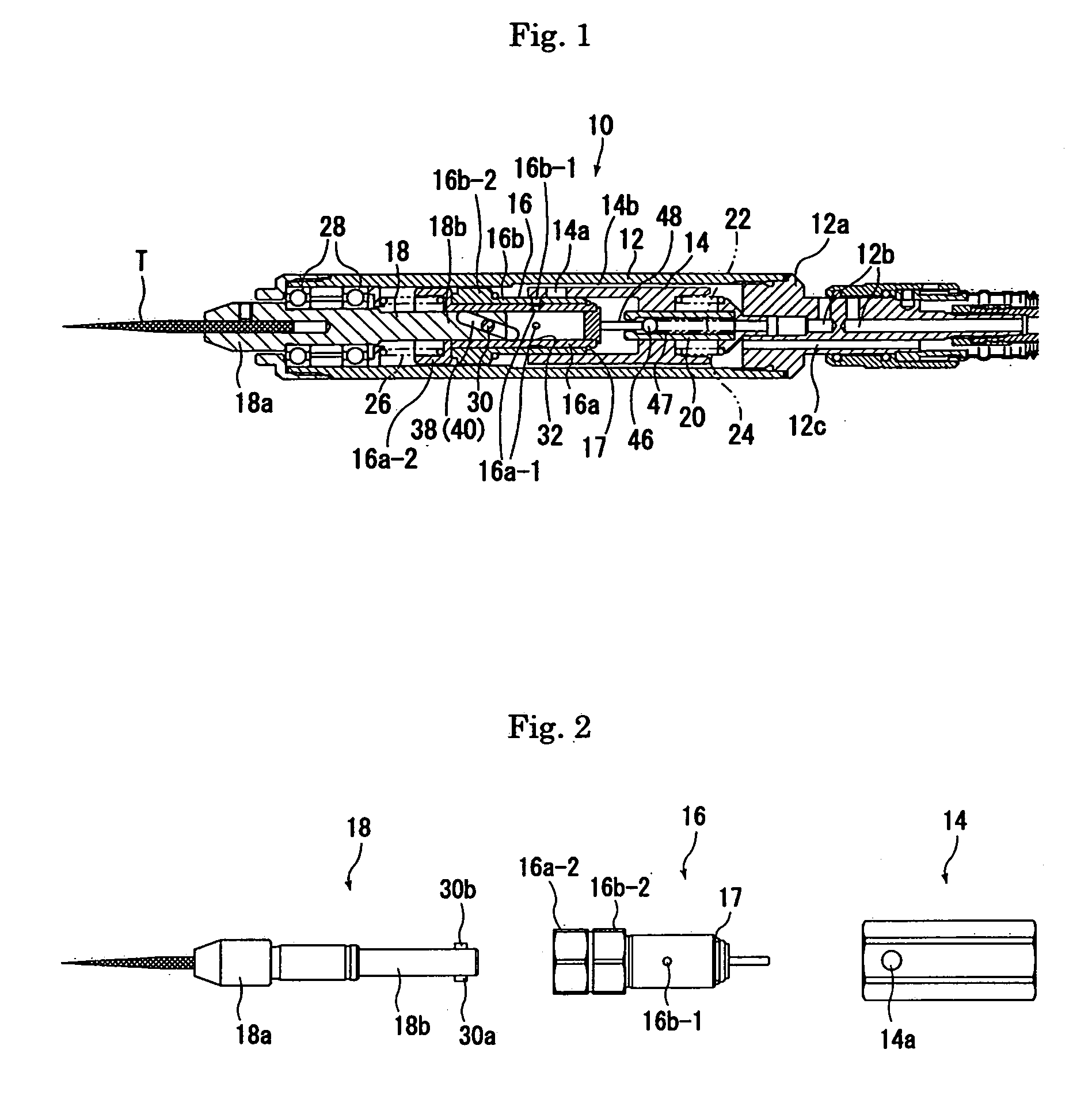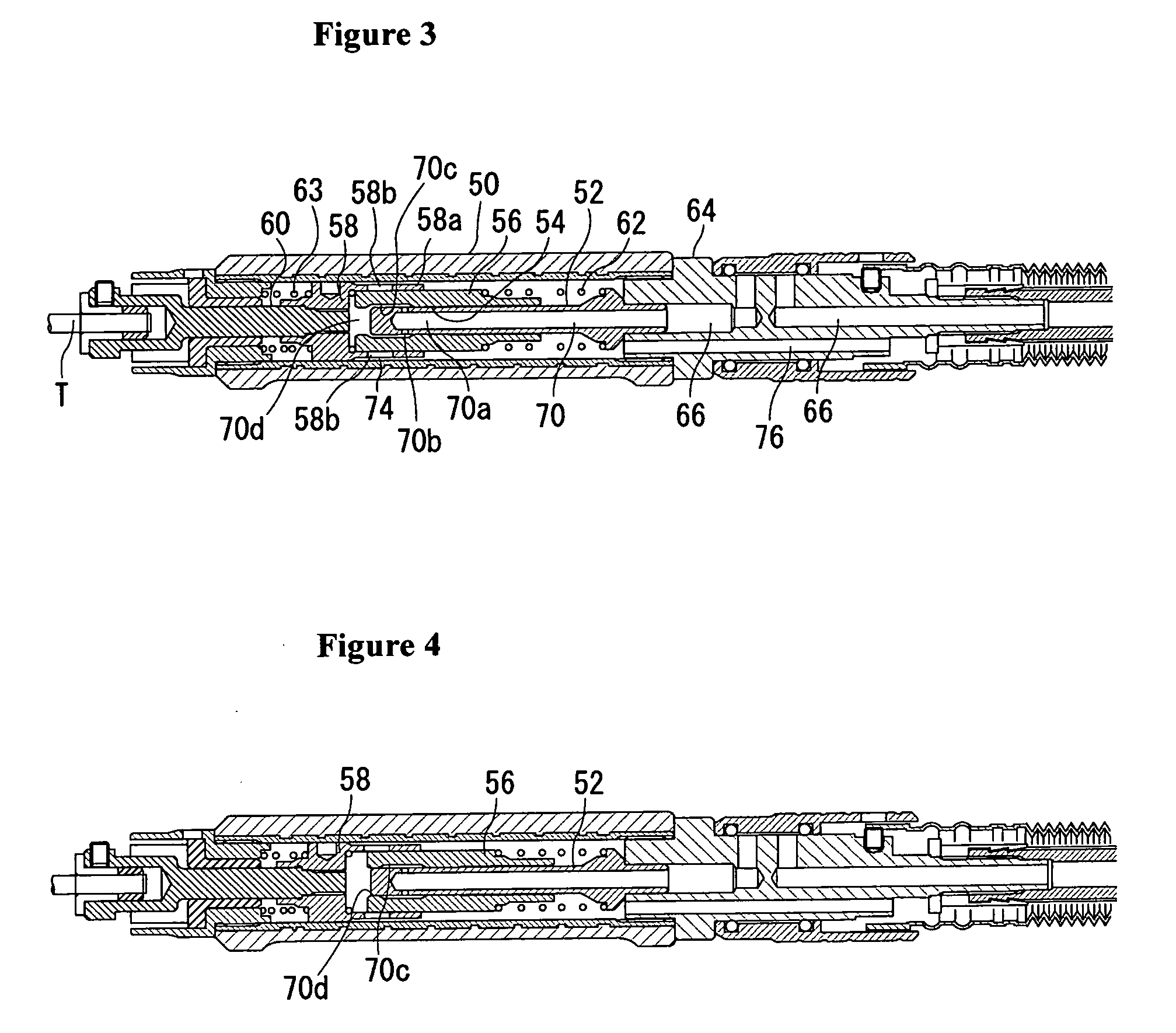Pneumatic Tool
a pneumatic tool and tool attachment technology, applied in the field of pneumatic tools, can solve the problems of high air consumption, low efficiency, and low efficiency of conventional pneumatic tools, and achieve the effect of minimizing the rotation of the second piston and increasing the rotational movement (pivotal movement) of the tool attachment member
- Summary
- Abstract
- Description
- Claims
- Application Information
AI Technical Summary
Benefits of technology
Problems solved by technology
Method used
Image
Examples
Embodiment Construction
[0072]First, an embodiment in which the present invention is applied to an oscillating grinding tool will be explained in detail with reference to FIGS. 1 and 2.
[0073]FIG. 1 is a sectional side view of an oscillating grinding tool 10 according to the present invention. FIG. 2 is an exploded view illustrating the oscillating grinding tool 10, with a tubular housing 12 removed therefrom to show main elements mounted in the housing 12.
[0074]The oscillating grinding tool 10 has a tubular housing 12 and other main elements that are coaxially mounted in the housing 12, i.e. a tubular first piston 14 slidable in the axial direction of the housing 12, a second piston 16 slidable in the first piston 14, and a tool attachment oscillating member 18 drivingly connected to the second piston 16 and oscillated about the longitudinal axis thereof.
[0075]The first piston 14 is urged forward by a compression coil spring 24 set between the first piston 14 and the rear end of the housing 12. The second ...
PUM
| Property | Measurement | Unit |
|---|---|---|
| time | aaaaa | aaaaa |
| distance | aaaaa | aaaaa |
| angle | aaaaa | aaaaa |
Abstract
Description
Claims
Application Information
 Login to View More
Login to View More - R&D
- Intellectual Property
- Life Sciences
- Materials
- Tech Scout
- Unparalleled Data Quality
- Higher Quality Content
- 60% Fewer Hallucinations
Browse by: Latest US Patents, China's latest patents, Technical Efficacy Thesaurus, Application Domain, Technology Topic, Popular Technical Reports.
© 2025 PatSnap. All rights reserved.Legal|Privacy policy|Modern Slavery Act Transparency Statement|Sitemap|About US| Contact US: help@patsnap.com



